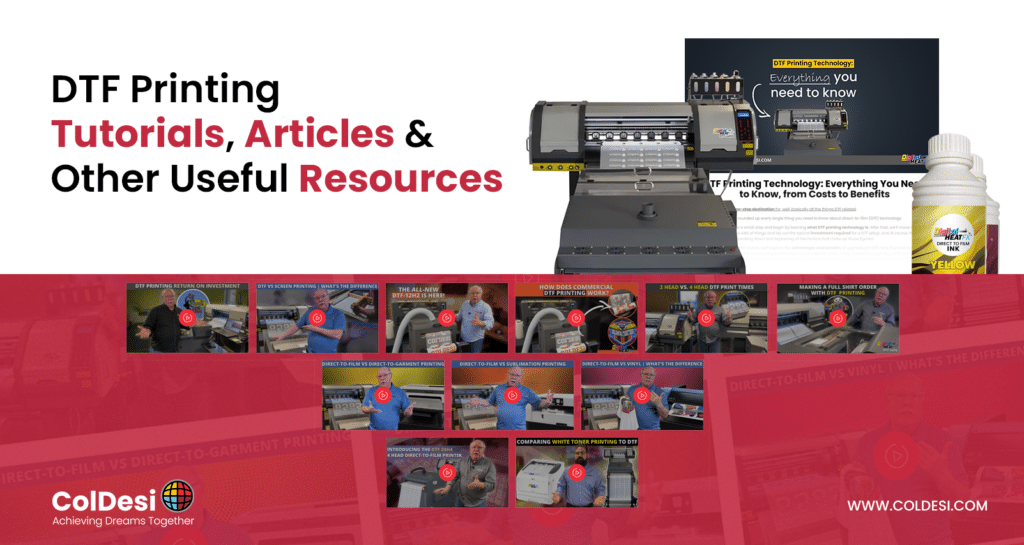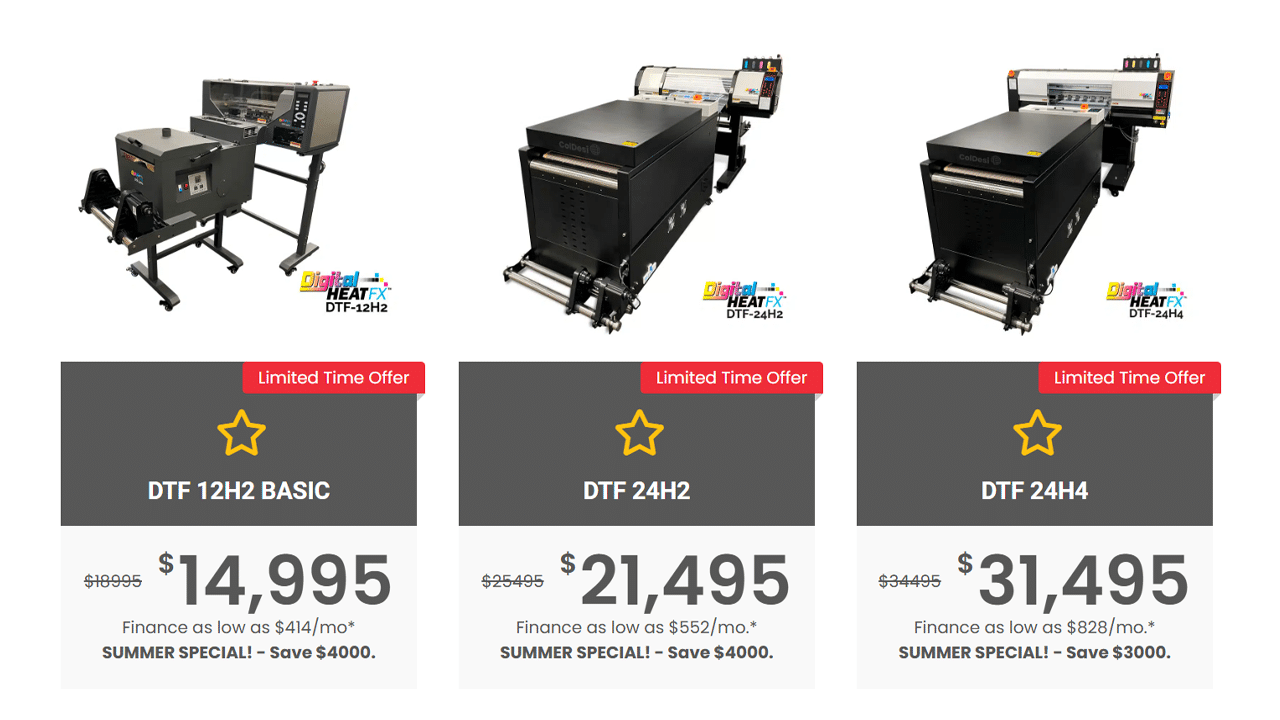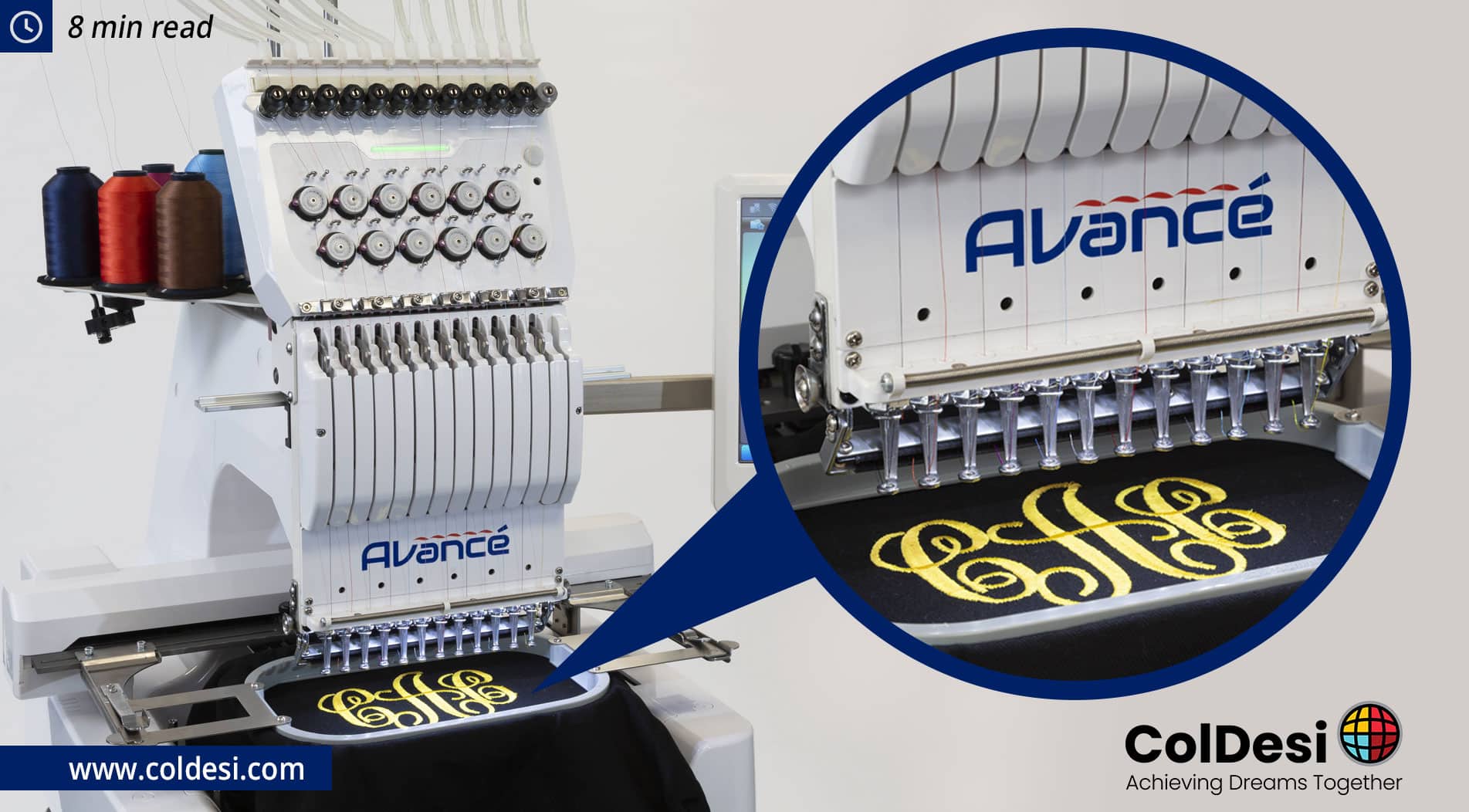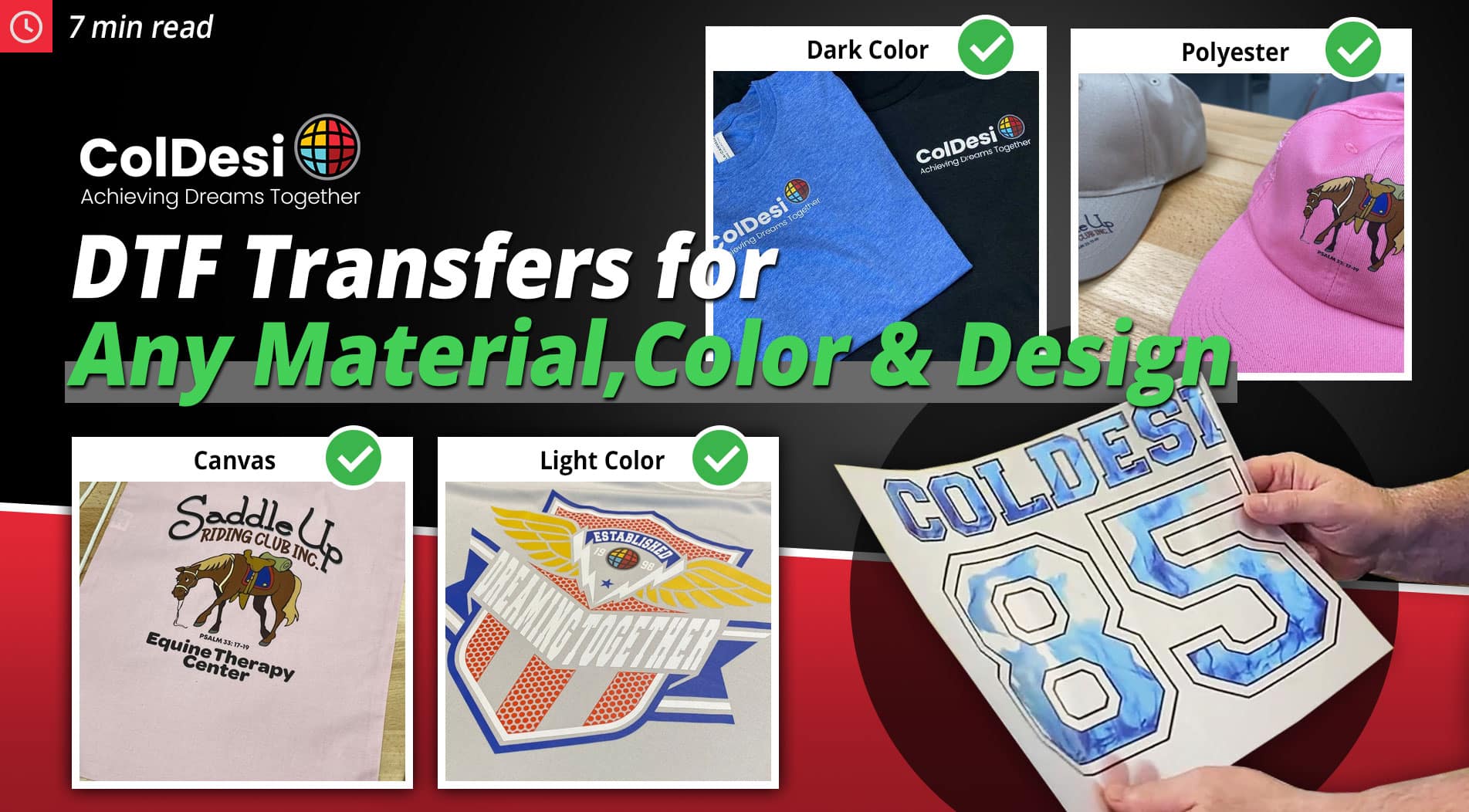When you’re on a budget, you often look for lower prices. We all do. In our effort to save money, we’re sometimes willing to make compromises.
Sometimes we make them in ways that don’t really help us (or make any sense).
Take direct-to-film (DTF) printing, for example. We might buy a cheap DTF printer, thinking we’re saving money.
However, it ends up costing us more.
So, why not do it the right way from the start?
Buying a high-quality DTF printer might seem like a BIG expense now, but it will save you from extra costs and trouble in the long run!
So, this article should help you decide if it’s worth stretching your budget to get something better.
Let’s get right to it, shall we?
What is Direct to Film (DTF) Printing & How Does It Work?
Before getting into where we want to take this article, let’s step back and start from the beginning. What is a DTF printer, and how does it work?
Well, the explanation on the technology is a lot simpler than you might think.
The acronym DTF is short for direct-to-film. Just like what the name hints at, this printing method involves printing your artwork (with water-based pigment inks) onto a special PET (polyethylene terephthalate) transfer film, which is then transferred onto the garment using a heat press.
You may want to read that sentence at least twice to untangle it. Because, that’s what DTF comes down to, plain and simple.
Of course, words hardly do it justice. Here’s a video that may illustrate this better.
You can read more about how the DTF printing process works by clicking here.
The Appeal of Cheap DTF Printers
What’s so appealing about cheap DTF printers? Aside from the fact that they’re easy on the wallet?
Well, you could fill in the blank with whatever explanation you see fit. BUT, for most of us custom apparel business owners, the philosophy behind going the cheaper route is to mitigate risk and minimize additional costs.
Now, that’s just one example. There are a number of other possible reasons. So, why don’t we just go ahead and pull a spotlight on them?
1. Low Barrier to Entry: For those just starting in the custom apparel or promotional merchandise business, the lower price point of these printers makes it accessible without a huge initial investment. This low barrier to entry allows more people to try their hand at designing and selling custom products, whether online or at local markets.
2. Market Testing: A cheaper DTF printer can be a practical tool for testing the market without committing to a hefty investment. This is especially relevant for startups aiming to gauge customer interest, validate business models, and refine their product offerings.
3. Faster ROI: With a lower initial cost, businesses can reach the breakeven point—or return on investment—more quickly. This means that everything earned afterward is pure profit. The owners can then reinvest in upgrading equipment, expanding the business, or covering other expenses.
4. Upgradability: Some businesses might start with a basic model and plan to upgrade as their needs grow and their business becomes more profitable. This incremental approach allows them to scale their operations in line with their financial situation and market demand.
5. Reduced Risk: As briefly mentioned previously in the intro, if the venture doesn’t pan out as expected, the financial loss is easier to absorb and potentially could be three to four times lower compared to investing in a high-end DTF printer.
6. Competitive Pricing: Starting with a cheaper DTF printer allows businesses to sell custom apparel at better prices. This can lead to more sales, faster inventory turnover, and quicker profits.
7. Sufficient Quality for Entry-Level Markets: In many cases, cheaper DTF printers can still produce quality prints that are acceptable for entry-level or budget-conscious markets. For small runs, custom orders, or products that do not require the highest possible print quality, these printers are good enough. The market you’re targeting often sets the standard for what’s considered acceptable quality.
These would all be good reasons why someone might consider not investing in a high-end, pricey DTF printer. However, as we all know, lower prices do come with some sacrifices, including fewer benefits and features.
So, in the next chapter ahead, let’s address the most common problems associated with cheap DTF printers.

Continue growing your DTF knowledge with detailed explainers, guides, articles, video demonstrations, and podcasts.
Quality and Performance Issues
Given all the key points we just discussed about choosing a budget-friendly DTF printer over a more expensive one, it’s easy to see why this choice has its appeal.
However, you take a lot of that away and the allure isn’t so great.
You might find that not everything is sunshine and rainbows when you weigh the potential problem areas, limitations, and trade-offs.
So, let’s use this section to go over common issues with budget DTF printers.
Inconsistent Print Quality: In no particular order, the first ‘performance issue’ that has found its way to the top of the list is inconsistent print quality. Lower-end models may struggle producing accurate colors. You might notice variations in color saturation, contrast, black-levels, brightness, and things like that.
Resolution and Detail: Budget models may not deliver the same resolution or image sharpness. So, you might miss out on some of the fine details.
Frequent Breakdowns: Another limiting factor to cheaper DTF printers is their tendency to suffer from frequent breakdowns. This issue can stem from several factors, such as the use of lower-quality components, the experience and expertise of the manufacturers, how long they’ve been in the business, and their track record with building similar printers.
Slower Printing Speeds: Cheaper DTF printers typically have slower print speeds compared to higher-end models. While higher-end printers are designed to handle continuous, high-volume printing, cheaper models may also claim to do so. However, the question remains: can they really deliver on those marketing promises?
When you stack up that many things, one thing is clear: you can’t expect the same performance as you would from high-end models.
But, we have more to work with, so let’s just keep on going.
Hidden Costs and Long-Term Expenses
The story doesn’t end there, of course. We’re yet to talk about the hidden costs and long-term expenses that can come up if you choose the budget option.
Now, it’s not to say that these issues are guaranteed to happen, but consider this a cautionary tale illustrating potential outcomes.
Frequent Repairs: Before anything else, we should ask ourselves a question: if something goes wrong with our DTF printer, will there be anyone available for help? Or will we be left to handle repairs on our own? Lower-end models are more likely to break, and you’ll have to absorb those expenses. Over several years, these costs can add up, and you might find yourself regretting the decision.
Higher Maintenance Costs: This one ties in closely with our previous point. To create a printer that’s affordable for the mass market, manufacturers often have to cut corners. This usually means using cheaper parts and components. It wouldn’t be a big deal if these parts lasted, but unfortunately, that’s often not the case. This drives up maintenance and upkeep costs.
Replacement Parts: Consider the possibility of an unexpected printer breakdown. You might think, “I’ll just use the warranty,” and if that works, great—problem solved. But with some less reliable brands, you might be left to handle it yourself. This means diagnosing the issue and finding replacement parts, which can be tricky. What parts do you need, and where do you get them? Sometimes, they might even need to be sourced from overseas.
Business Downtime: These issues could create significant bottlenecks and result in downtime for your business. It might take several weeks before you’re back up and running and able to operate as usual.
Angry Customers: It doesn’t take a genius to see where this is heading—angry customers. And that’s definitely not a recipe for business success! Nowadays, everyone has a voice, and unhappy customers will quickly share their experiences online through negative reviews and feedback. Existing clients might start looking for alternatives, and potential new customers might avoid you altogether due to downtime and poor reviews.
Now, we don’t want to make this sound too pessimistic. But, the reality is that people do face these challenges.
So, our recommendation to you is to not make it harder than it has to be. Stretch your dollar by choosing the ColDesi line of DTF printers.
That actually segues into our next topic.
Comparison with High-Quality DTF Printers
If you’ve made it this far, it’s clear you understand the value of investing in quality. The ColDesi line of DTF printers stands out as the ideal investment for those seeking an all-in-one package.
Now is the perfect time to explore the lineup, compare the models, and see how they stack up against one another.
We have several videos showcasing the capabilities and features of each model.
So, sit back and watch them! They’ll give you a great introduction and help you determine which model is the best fit for you.
To learn more about ColDesi’s line of direct-to-film (DTF) printers, visit coldesi.com and Live Chat with a Pro below, or call 877.793.3278.





